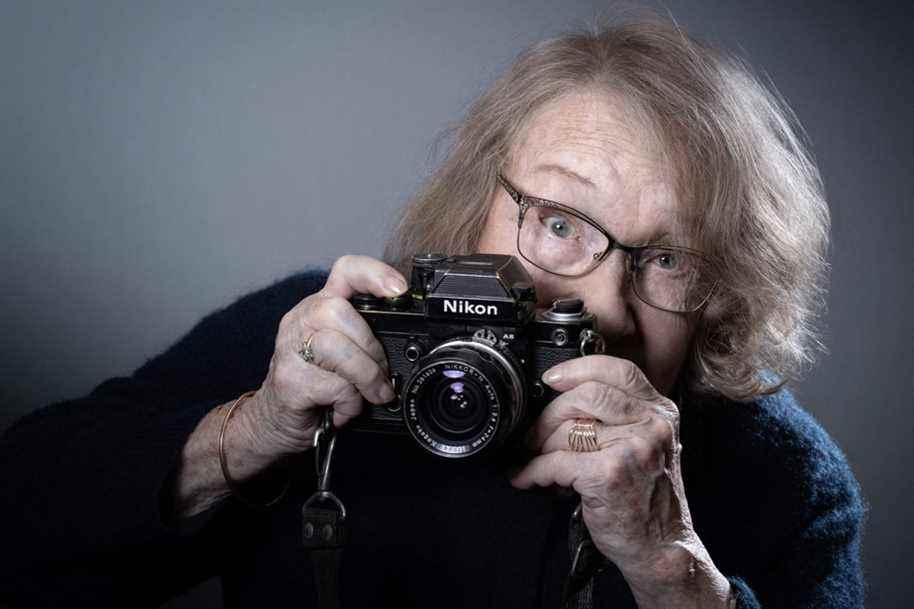(Paris) Sabine Weiss loved to capture the “brats”, “beggars” and “little smirks” crossed in the street: this photographer, mischievous and rigorous, also known for her fashion photos published in Vogue was the last disciple of the French humanist school.
Like Doisneau, Boubat, Willy Ronis or even Izis, Sabine Weiss, who died Tuesday at the age of 97, immortalized the simple life of people, without however claiming any influence.
“I never thought of taking humanistic photography. A good photo should touch, be well composed and uncluttered. The sensitivity of people must be obvious, ”she said in La Croix.
Winner of the Women in Motion in 2020 Photography Prize, Sabine Weiss has been the subject of some 160 exhibitions around the world.
A pioneer of post-war photography, this outstanding technician, with an eclectic background, in color as in black and white, was born in Switzerland before being naturalized French in 1995.
A discreet personality and less known to the general public than other photographers of her time, this bubbly woman of 1.55 m who denied having suffered from any “segregation” as a woman, wanted to establish “a constant dialogue” with her subject, considering photography as “a friendship”.
“The people who know me are those who like my gaze,” she said on France Inter. I am compassionate ”.
“I never wait”
Post-war Paris launched his career. There, around the 1950s, she walks, often at night, the capital with her husband, the American painter Hugh Weiss (the couple will adopt a daughter) to freeze fleeting moments: workers in action, furtive kisses, comings and goings in the subway entrances. “The capital, at the time, bathed at night, in beautiful fog”.
In these pictures, the children are very present, like this radiant little Egyptian immortalized in the open. “It’s a challenge, you have to go fast and I never wait! “.
In what she called “my brat images”, she hangs smiles, games or antics of filthy faces on torn clothes. “It’s fun to play with street children”, she said, with the desire to have been the witness of her time and to denounce injustices.
Born Weber on July 23, 1924 in Saint-Gingolph on the shores of Lake Geneva, Sabine Weiss acquired at the age of 12 her first camera with her pocket money. Not at school, she learned the trade at 16 in a famous Geneva studio.
Arrived in Paris in 1946, she worked for the fashion photographer Willy Maywald. The year of her marriage, in 1950, she opened her studio in the 16e arrondissement while Doisneau introduced it to Vogue and to the Rapho agency (now Gamma-Rapho).
She frequents artistic circles, does portraits of Stravinsky, Britten, Dubuffet, Léger or Giacometti. She will work, and succeed, in several registers: reportage (she travels a lot), advertising, fashion, spectacle, architecture.
“I did everything in photography,” she confided to AFP in 2020. “I went to morgues, to factories, I photographed rich people, I took fashion photos … But what remains are only photos that I took for myself, on the sly ”.
“Take a picture! ”
Preferring in all things sobriety to “very bright things”, she responds to orders from major magazines (Newsweek, Time, Life, Esquire, Paris Match, etc).
Prolific and generous, Sabine Weiss bequeathed in 2017 200,000 negatives and 7,000 contact sheets to the Musée de l’Elysée in Lausanne. “I don’t know how many photos I took, she told AFP in 2014, anyway, that doesn’t mean much”.
During this same interview, she marveled – without nostalgia – at the digital revolution: “it’s great, it’s sharp, the exposure time, the lenses are wonderful”.
Currently, “people do not photograph so much around them, but rather themselves,” she noted to AFP in 2020, referring to selfies.
For her, these are all traces of life that should be preserved over time. “You have to tell people: photograph, photograph people, things around you. Say it! “
